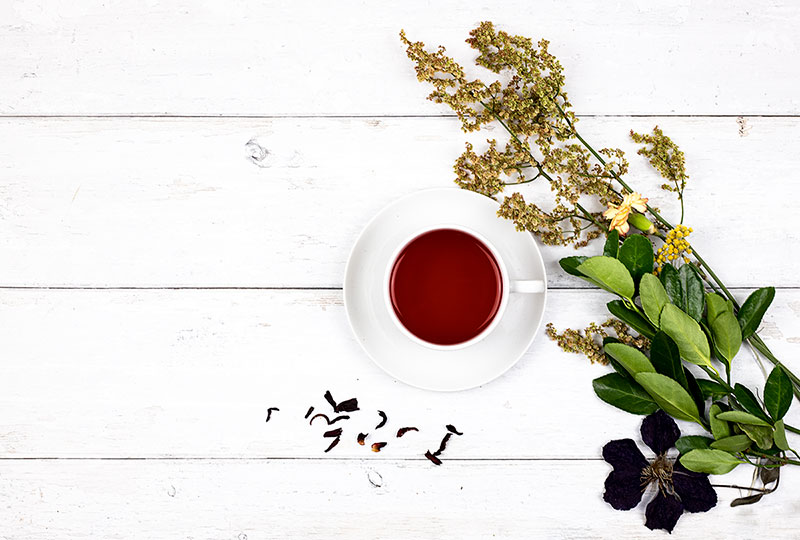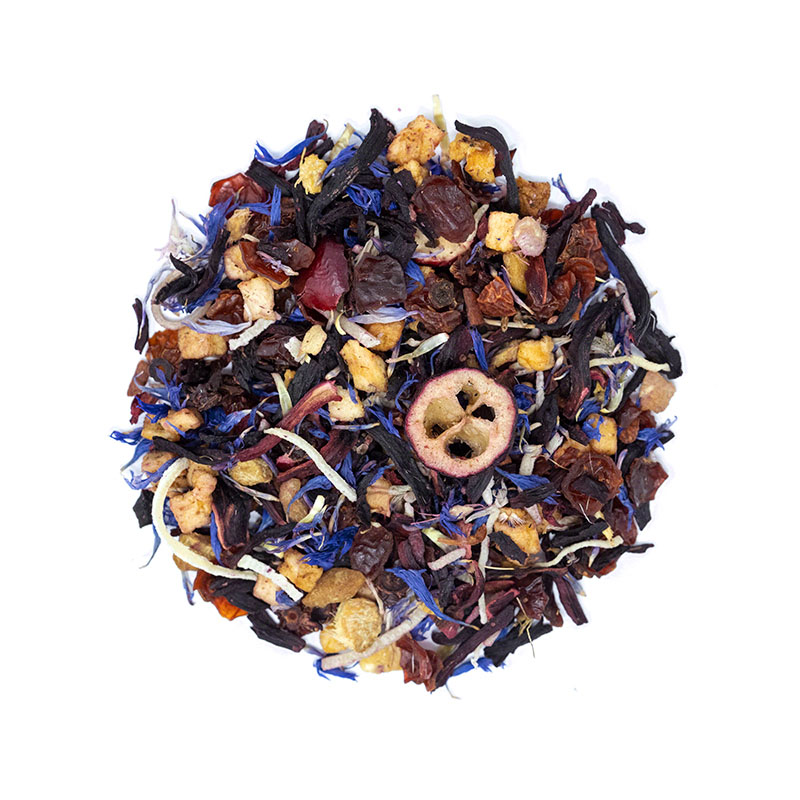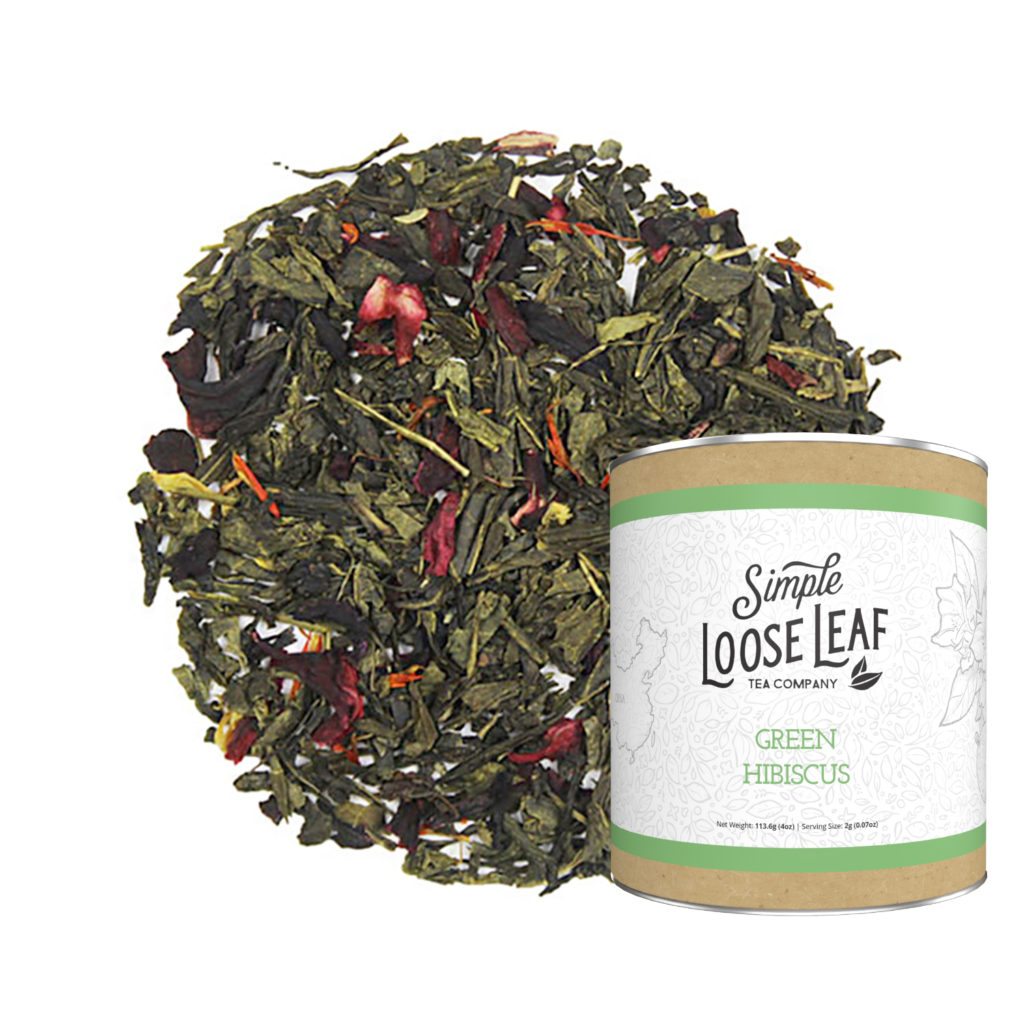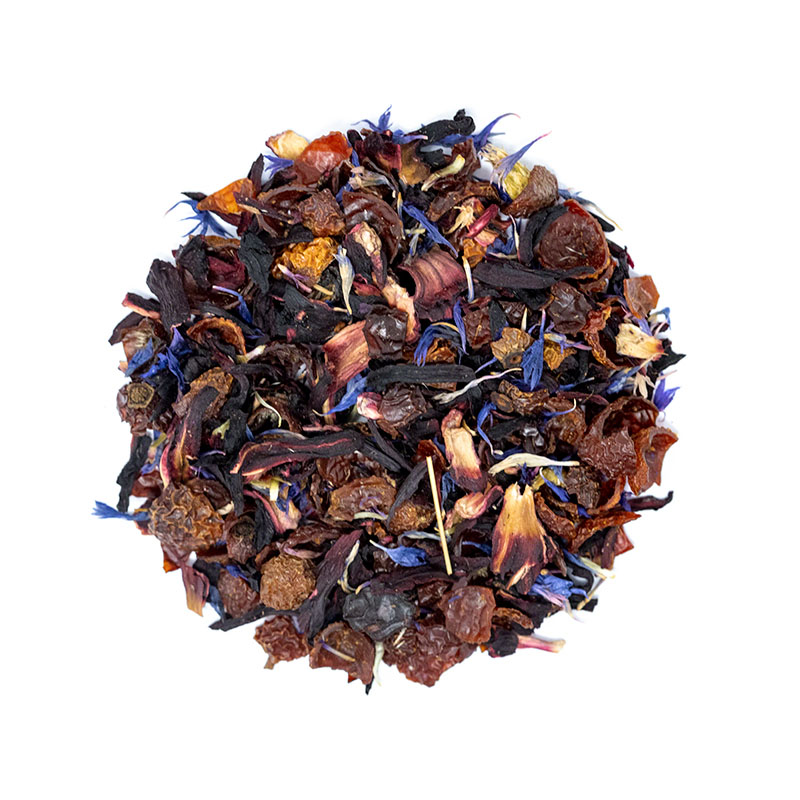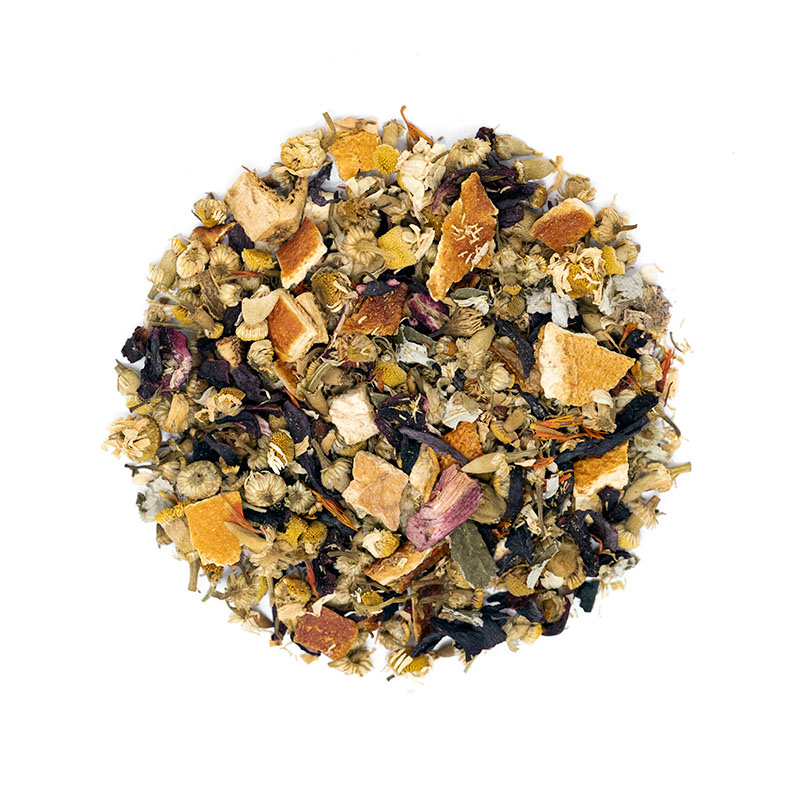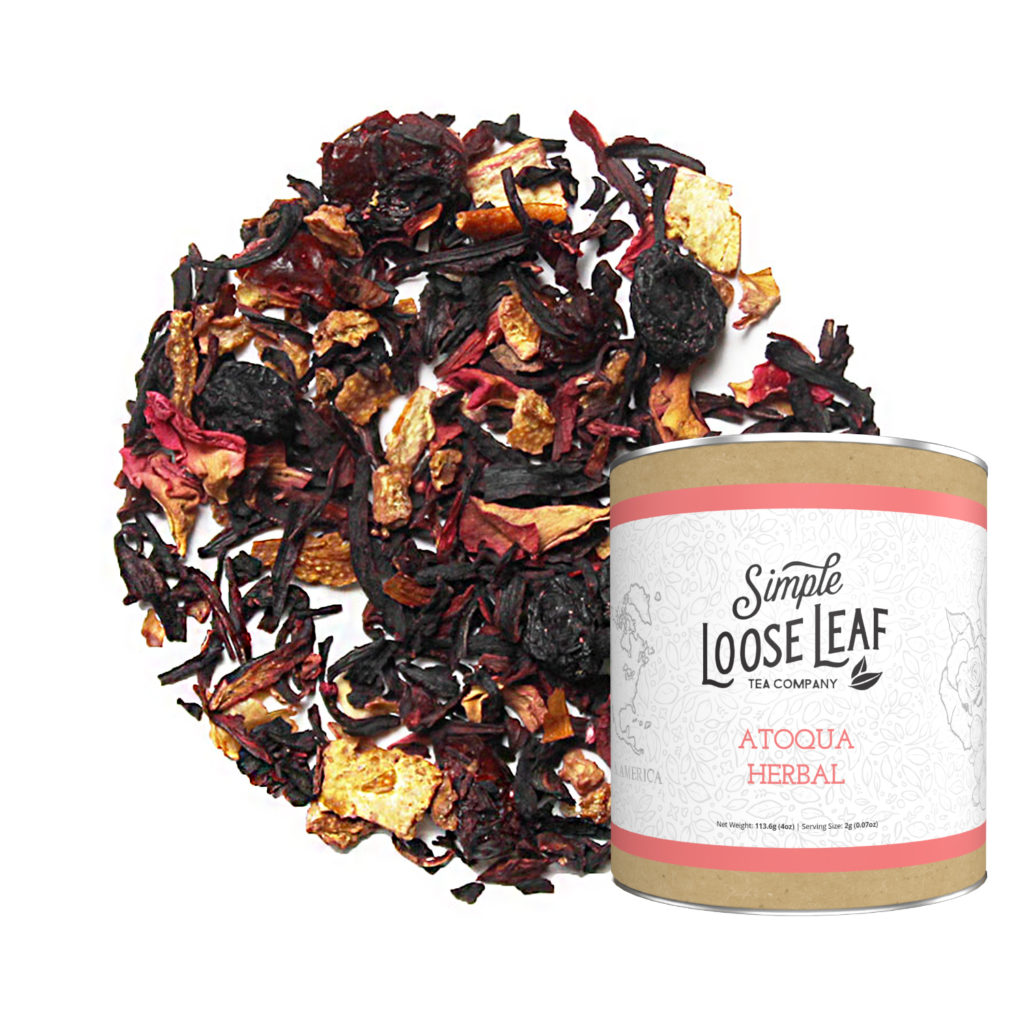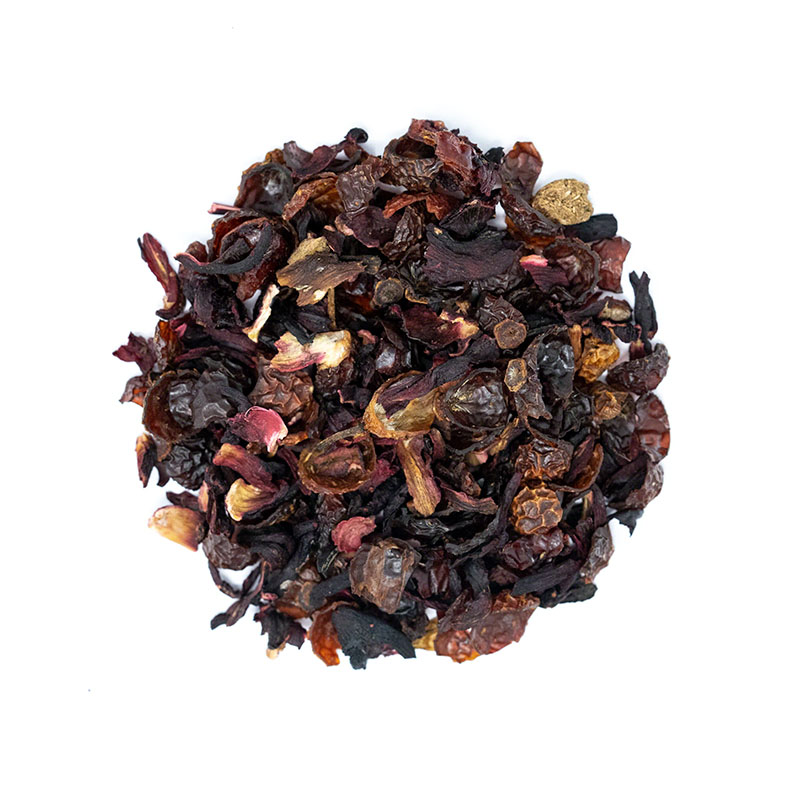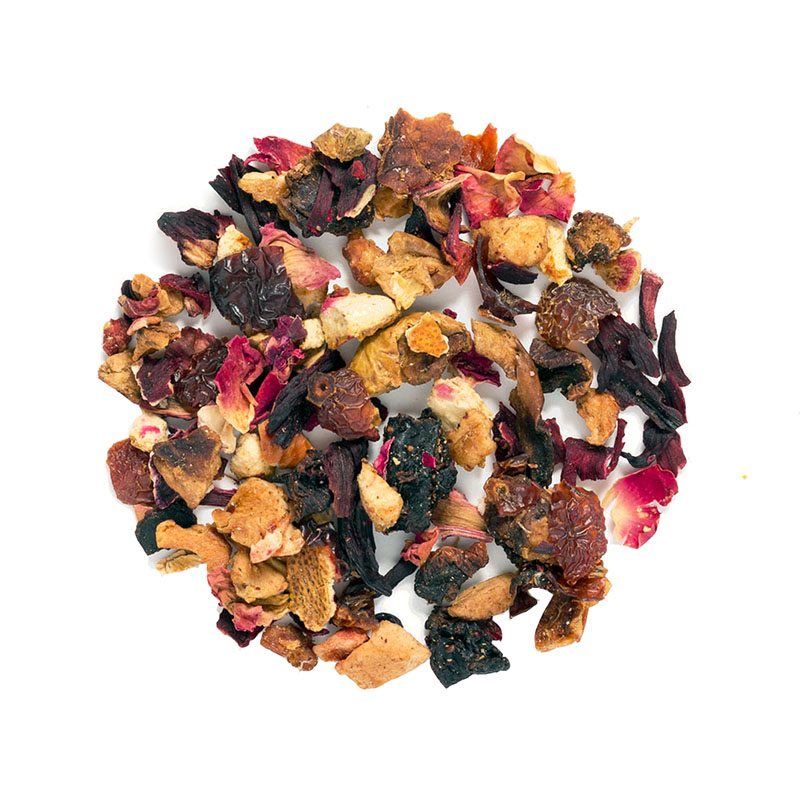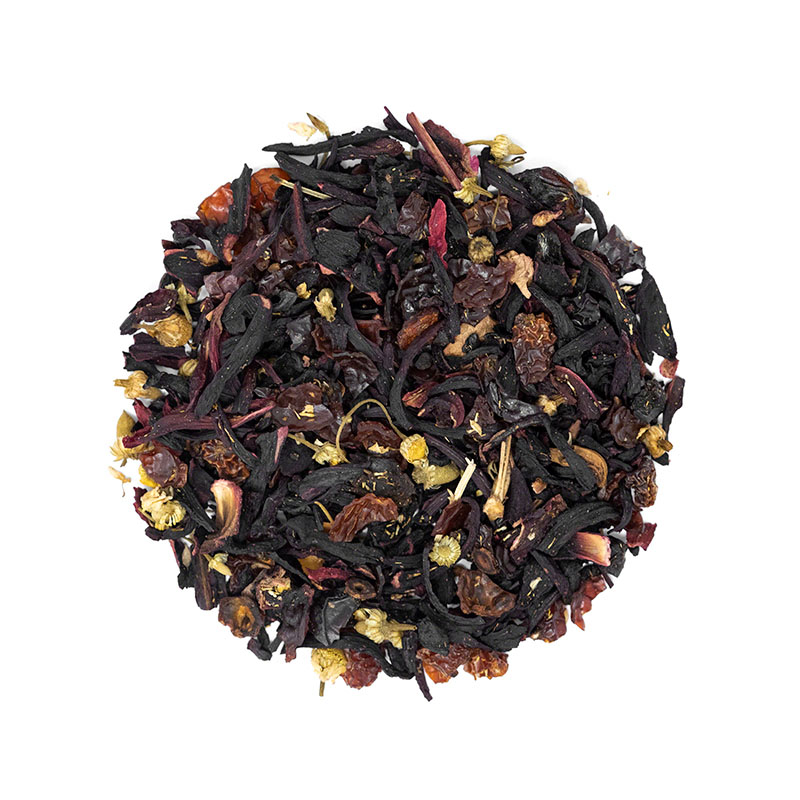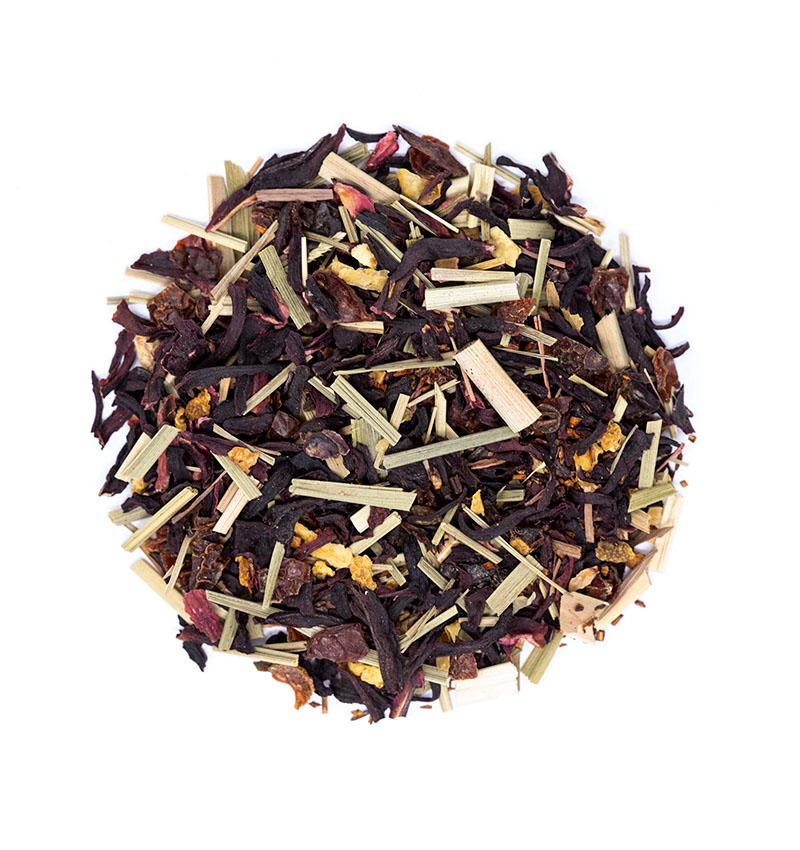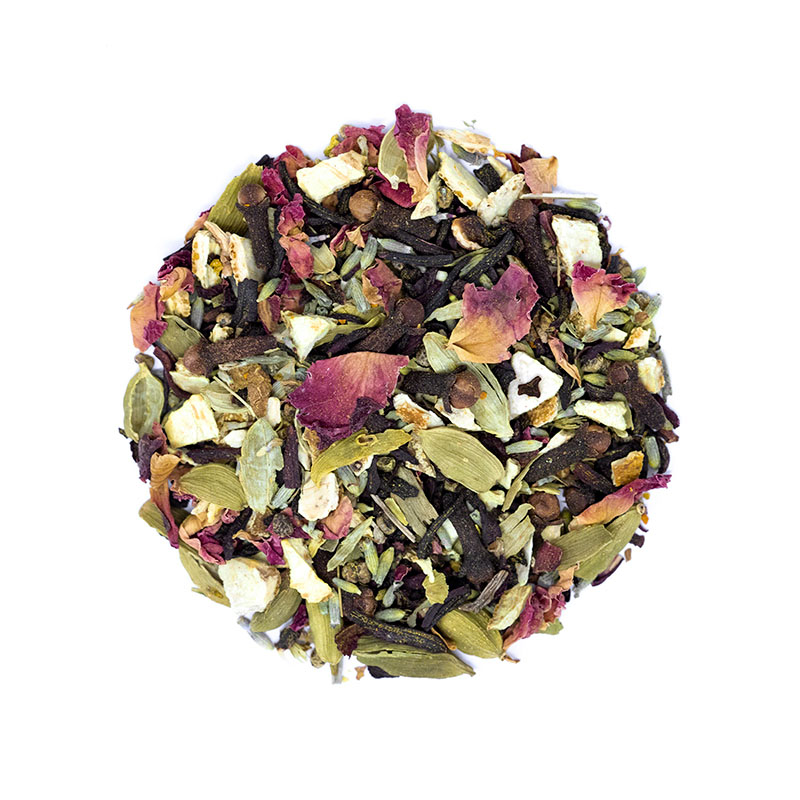10 Best Hibiscus Teas to Drink in 2021
Hibiscus tea is one of the most beautiful herbal flower teas in the world. This deep crimson beverage has a refreshing, unique and tart flavor and it’s popular all around the world. It’s perfect for making flavorful and colorful summer drinks too. What is hibiscus tea and what are a must-try blends?
What is hibiscus tea?
Hibiscus tea is a herbal tea made from petals or sepals of the hibiscus flower. Together, they make a calyx. It has a unique dark crimson color and tart flavor. Taste is somewhat similar to cranberries, but more deep and intense. Hibiscus is one of the best and most popular ingredients for fruity tea blends because it can deepen the flavor of the tea and give a truly remarkable beautiful color.
It’s popular around the world, especially in South America, Africa and some parts of Asia. Hibiscus plant is very versatile and all parts of the plant are edible. However, flowers are the tastiest, which makes them more popular than leaves for making beverages. Both fresh and dried flowers can be used for drinking and cooking. Hibiscus tea tastes great both hot and iced.
Today, hibiscus is available in tea bags and as a loose leaf tea.
Hibiscus belongs to the same botanical family as the popular okra or bammia, a plant with delicious green pods often used in Asian cuisine. Both plants have similar flowers. The Latin name for okra is – Hibiscus esculentus.
Not all types of hibiscus are good for making tea and preparing food. If you are brewing tea from fresh organic hibiscus flowers, always make sure they are edible and safe. Alternatively, buy dried hibiscus flowers to avoid any risk.
What are traditional hibiscus drinks?
Many countries include some type of hibiscus beverage on their list of traditional drinks. These are some of the most well-known hibiscus drinks:
- Mexican Agua de jamaica
Although the name may imply this drink is traditional to Jamaica, it’s not. Jamaica is actually a word for „hibiscus flower“ and this tea is specific to Mexico. Agua de jamaica or hibiscus water is served over ice and a truly refreshing summer delight. - Nigerian Zobo
Zobo is the traditional Nigerian hibiscus drink with water, dried hibiscus flowers, sugar, ginger and sometimes other spices and fruits. It’s usually served chilled. - Egyptian Karkade
Traditional Egyptian hibiscus tea is called Karkade, and it’s made by boiling sugar and hibiscus flowers in water[1]. It’s served both hot and cold. - Caribbean Sorrel
Sorrel, which means hibiscus in Jamaica is a drink made with hibiscus flowers, sugar, water, spices and sometimes – rum[2]. It’s usually served over ice.
What is the best hibiscus tea?
There are more than 200 types of hibiscus and not all of them are edible. The best and the most common hibiscus tea is made from Hibiscus sabdariffa or roselle. It’s deep purplish red and has a unique tart flavor. The other popular edible hibiscus is Hibiscus acetosella or the false rosella with pink flowers. It’s more commonly used for preparing dishes and decoration than making tea.
What are the health benefits of hibiscus tea?
Hibiscus tea is not only caffeine free, beautiful and delicious, it has many potential health benefits too. It’s been used as on of the traditional medicinals in many countries around the world – from China and Thailand to Egypt and Nigeria[3]. Studies showed that drinking hibiscus tea may provide the following benefits:
- Lowering blood pressure, bad cholesterol, fat cells in the blood and reducing the risk of cardiovascular diseases[4]
- Antimicrobial activity against some bacteria that’s resistant to many antibiotics such as Salmonella and E.coli[5]
- Weight loss potential[6] and preventing accumulation of body fat[7]
- Potential to prevent cell mutation and different cancers[8]
- Antiviral activity and potential to help with type A influenza[9]
- Rich in Vitamin C, minerals, amino acids, carotene[10]
- Anti oxidative activity and free radicals scavenging activity[11]
What are the best hibiscus blends?
-
-
Plum Spice
A few delicious fruits, a couple of spices and a tart hibiscus blended into an alchemical fruity tea with a rich vibrant red color and energetic soul. Plum Spice tea is by far the most delicious tea party drink ever – and one of the most beautiful ones too. From coconut & apples to cranberries & hibiscus, this tea has so many layers of fruitiness it’s impossible to resist. Just a tiny bit of ginger and cinnamon chips add a very light spicy note to make it even more irresistible. This blend has a less accent on hibiscus and more on fruity ingredients. Perfect both hot and iced. Doesn’t contain caffeine.
Plum Spice fruity tea blend
-
Green Hibiscus
A blend crafted with the two most classical ingredients for a cup that’s far from being classical. Green Hibiscus is one of rare crimson green teas. Fresh green sencha, sweet and sour hibiscus and delicate jasmine flowers brew into a vibrant cup full of flavor, but much lighter, less sour and more refreshing than the herbal hibiscus tea – and much bolder than the common sencha. Perfect for making iced tea and cold brewing. This tea contains caffeine.
Green Hibiscus tea
-
Sweet Hibiscus
Hibiscus, rose hips and delicious lychee and Goji berries flavors create this simple and elegant caffeine-free blend that’s more sweet than your usual cup of hibiscus tea. Perfect for hot and cold brewing.
Sweet Hibiscus fruit blend
-
Berry Chamomile
There’s chamomile tea, and there’s unique chamomile tea. Berry Chamomile is the unique one. It has a a lighter hibiscus and orange note, and lots of chamomile sweetness. Berry Chamomile is perfect hot to help you relax before sleep, or ice cold to help you survive a hot summer day.
Berry Chamomile herbal tea
-
Atoqua Herbal
With bold and fruity flavors, tartness of cranberries and hibiscus and zestiness or orange and lemon peel, and a beautiful dark color, Atoqua Herbal is great for making strong and refreshing iced teas. Contains no caffeine.
Atoqua Herbal tea
-
Cherry „T“
Rich dark and berrilicious blend with cherry flavor and hibiscus background and even four other berry notes – elderberry, cranberry, blackberry and raspberry. Caffeine free, intensely fruity and dark and great for making iced tea or serving hot with whipped cream.
Cherry T herbal tea with cherries, hibiscus and other berries
-
Red Rose
Red Rose is first and most a fruity tea with a lighter hibiscus note. It’s a blend for fruit lovers that want to enjoy a sweet and tart flavors closer to classical fruity teas with a dose of sophistication. Light rose and citrus note and bold strawberry and orange.
Red Rose herbal tea
-
Prickly Pear Herbal
Prickly Pear Herbal is a gentle, sweet and tart tea blended to bring you the calmness of the desert and a gentle refreshment. Two refreshing ingredients, one calming flower and a delicious Prickly Pear cactus fruit create a mouth-watering blend with zero caffeine and unusual sweet & tart flavor. Brew hot or cold.
-
Citrus Hibiscus
A tangy citrus herbal blend with a bit of rooibos, a bit of lemongrass a bit of orange peel and a whole lot of lemongrass and hibiscus. Citrus Hibiscus is a wonderfully smooth caffeine free brew that won’t keep you awake at night. Perfect for hot and iced tea.
Citrus Hibiscus herbal tea
-
Garden of Mariposa
Hibiscus blends wonderfully with herbs and spices too. Garden of Mariposa is like a walk through a garden filled with twists and turns, spices and citrus tarts, rose petals and lavender, turmeric and cloves, all sweetened up with a calorie free stevia leaf. A great alternative to caffeinated spiced teas.
Garden of Maribosa herbal tea
-
Disclaimer: The purpose of this article is not to diagnose or treat any diseases, or to replace an opinion of a professional doctor. Never self-treat any diseases, or drink large quantities of tea, real or herbal, if you are suffering from serious diseases, are pregnant or breastfeeding. Every person is different, and it’s impossible to make a general statement about the benefits or side-effects.
References:
[1] https://www.inside-egypt.com/karkade-the-refreshing-red-tea-of-egypt.html
[2] http://globaltableadventure.com/recipe/jamaican-sorrel-drink/
[3] https://www.ncbi.nlm.nih.gov/pmc/articles/PMC7277581/
[4] https://www.ncbi.nlm.nih.gov/pmc/articles/PMC3593772/
[5] https://www.ncbi.nlm.nih.gov/pmc/articles/PMC6963829/
[6] https://www.ncbi.nlm.nih.gov/pmc/articles/PMC5579700/
[7] https://www.ncbi.nlm.nih.gov/pmc/articles/PMC6337177/
[8] https://www.ncbi.nlm.nih.gov/pmc/articles/PMC5288558/
[9] https://www.ncbi.nlm.nih.gov/pmc/articles/PMC7223586/
[10] https://medcraveonline.com/JNHFE/nutritional-and-health-importance-of-hibiscus-sabdariffa-a-review-and-indication-for-research-needsnbsp.html
[11] https://medcraveonline.com/JNHFE/nutritional-and-health-importance-of-hibiscus-sabdariffa-a-review-and-indication-for-research-needsnbsp.html



